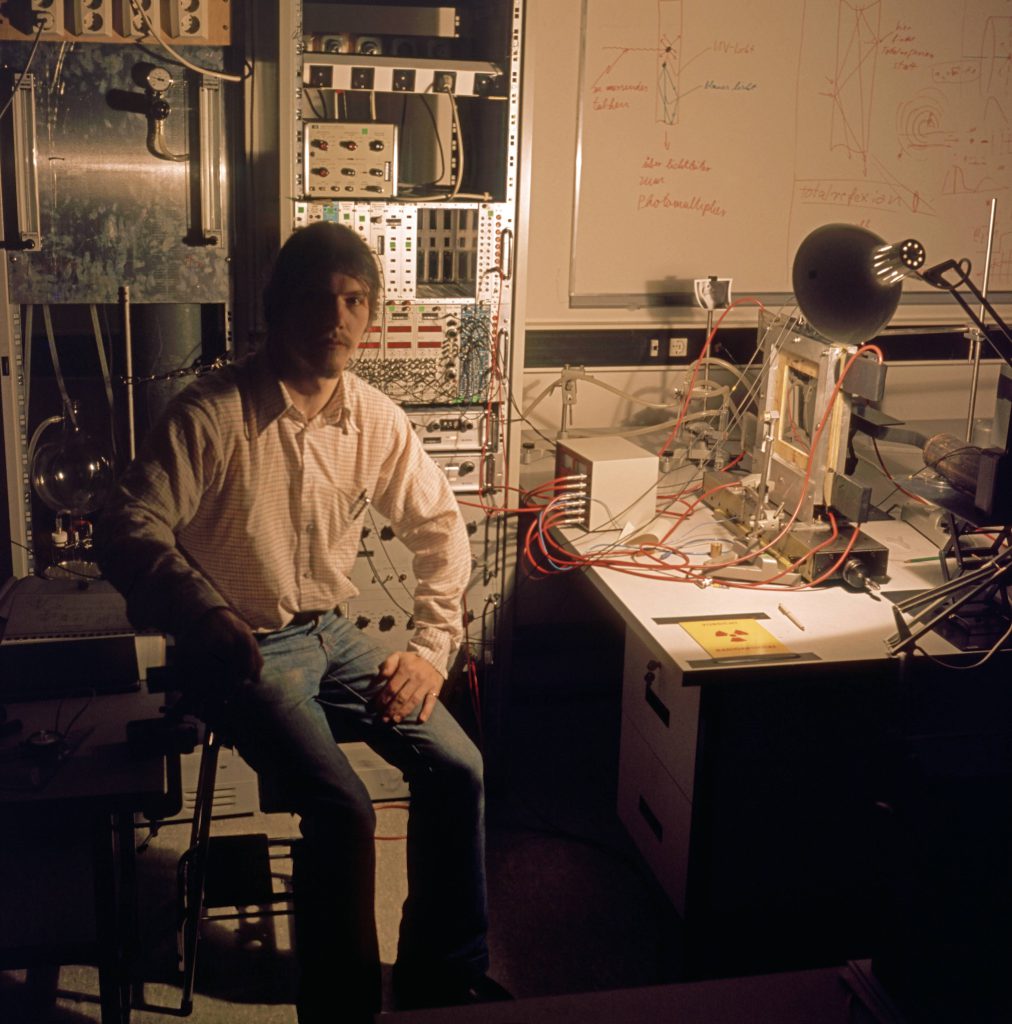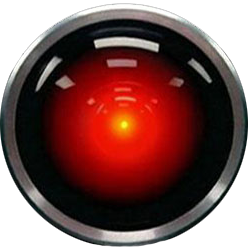
The Scientist



 Sir Ernest Rutherford, President of the Royal Academy, and recipient of the Nobel Prize in Physics, related the following story: “Some time ago I received a call from a colleague. He was about to give a student a zero for his answer to a physics question, while the student claimed a perfect score. The instructor and the student agreed to an impartial arbiter, and I was selected.
Sir Ernest Rutherford, President of the Royal Academy, and recipient of the Nobel Prize in Physics, related the following story: “Some time ago I received a call from a colleague. He was about to give a student a zero for his answer to a physics question, while the student claimed a perfect score. The instructor and the student agreed to an impartial arbiter, and I was selected.
I read the examination question: “Show how it is possible to determine the height of a tall building with the aid of a barometer.” The student had answered: “Take the barometer to the top of the building, attach a long rope to it, lower it to the street, and then bring it up, measuring the length of the rope. The length of the rope is the height of the building.”
The student really had a strong case for full credit since he had really answered the question completely and correctly! On the other hand, if full credit were given, it could well contribute to a high grade in his physics course and certify competence in physics, but the answer did not confirm this. I suggested that the student have another try. I gave the
student six minutes to answer the question with the warning that the answer should show some knowledge of physics. At the end of five minutes, he hadn’t written anything. I asked if he wished to give up, but he said he had many answers to this problem; he was just thinking of the best one. I excused myself for interrupting him and asked him to please go on. In the next minute, he dashed off his answer which read: “Take the barometer to the top of the building and lean over the edge of the roof. Drop the barometer, timing its fall with a stopwatch. Then, using the formula x=0.5*a*t^2, calculate the height of the building.”
At this point, I asked my colleague if he would give up. He conceded, and gave the student almost full credit. While leaving my colleague’s office, I recalled that the student had said that he had other answers to the problem, so I asked him what they were.
“Well,” said the student, “there are many ways of getting the height of a tall building with the aid of a barometer. For example, you could take the barometer out on a sunny day and measure the height of the barometer, the length of its shadow, and the length of the shadow of the building, and by the use of simple proportion, determine the height of the
building.”
“Fine,” I said, “and others?”
“Yes,” said the student, “there is a very basic measurement method you will like. In this method, you take the barometer and begin to walk up the stairs. As you climb the stairs, you mark off the length of the barometer along the wall. You then count the number of marks, and his will give you the height of the building in barometer units.” “A very direct method.”
“Of course. If you want a more sophisticated method, you can tie the barometer to the end of a string, swing it as a pendulum, and determine the value of g [gravity] at the street level and at the top of the building. From the difference between the two values of g, the height of the building, in principle, can be calculated.”
“On this same tack, you could take the barometer to the top of the building, attach a long rope to it, lower it to just above the street, and then swing it as a pendulum. You could then calculate the height of the building by the period of the precession”.
“Finally,” he concluded, “there are many other ways of solving the problem.”
“Probably the best,” he said, “is to take the barometer to the basement and knock on the superintendent’s door. When the superintendent answers, you speak to him as follows: ‘Mr. Superintendent, here is a fine barometer. If you will tell me the height of the building, I will give you this barometer.”
At this point, I asked the student if he really did not know the conventional answer to this question. He admitted that he did, but said that he was fed up with high school and college instructors trying to teach him how to think.
The name of the student was Niels Bohr.”
I ran into the following article today and just have to share it:
As we go about our daily lives, we tend to assume that our perceptions — sights, sounds, textures, tastes — are an accurate portrayal of the real world. Sure, when we stop and think about it — or when we find ourselves fooled by a perceptual illusion — we realize with a jolt that what we perceive is never the world directly, but rather our brain’s best guess at what that world is like, a kind of internal simulation of an external reality. Still, we bank on the fact that our simulation is a reasonably decent one. If it wasn’t, wouldn’t evolution have weeded us out by now? The true reality might be forever beyond our reach, but surely our senses give us at least an inkling of what it’s really like…
Continue reading at The Evolutionary Argument Against Reality
It doesn’t seem like many people in neuroscience or philosophy of mind are thinking about fundamental physics. Do you think that’s been a stumbling block for those trying to understand consciousness?
This interesting piece from the BBC came across my desktop the other day…
and I feel compelled to comment.
One interesting science-historical fact is from the days before the discovery of atomic forces, before we ‘knew’ that the energy produced by the sun is based on nuclear fusion where two heavy hydrogen atoms are fused into one helium atom. The energy contained in the one helium is less than that of the two hydrogen and the energy difference makes our days bright and life possible on earth.
But it is not, that before the discovery of these processes, scientists just sat there and agreed to wait for the discovery of nuclear fusion – no – they used what they knew then to explain the sun. Lacking nuclear fusion to generate heat they turned to coal, which they knew well to generate heat. So they came up with the idea that the sun is a big ball of pure coal – and it burned. They already had a good idea how big the sun was so, commandeering all the scientific methods at their disposal, they calculated how long we could depend on the sun to give is light and life. I don’t recall what the number was they came up with, but it was considerably lower that the now estimated ten billion. It did not matter too much, as other branches of science also did not know too much about the time it took for the current state to develop to what they could observe. And the creation of the world in five days was still a well accepted possibility.
We might smile just how cute – and wrong – science was then. But I can not help imagine scientists in a century or two who unearth this BBC video and have a good laugh.
I wonder where the humility of science has been lost so that it can now tell us with utter conviction “How the Solar System Formed.”
 I always enjoy Jon Rappoport’s articles on NoMoreFakeNews. The latest post on the idea of computers developing consciousness prompted me to add a bit of a different viewpoint to it:
I always enjoy Jon Rappoport’s articles on NoMoreFakeNews. The latest post on the idea of computers developing consciousness prompted me to add a bit of a different viewpoint to it:
Jon, this article just screams to me for an answer. First of all, I do agree with you on pretty much all of your viewpoints and actually enjoy your “Escape From the Matrix”. But where I want to bring a bit of a different viewpoint is body v. computer – for me they are pretty much the same – they are machines. But why is it that we have developed consciousness, one may ask? – I actually don’t think we have – but instead we started to occupy those meat-machines once they became good enough to represent us. In the same way, I imagine, that computers will become attractive enough at some point of sophistication for a souls/spirits to occupy them.
I realized this – many, many years ago – when I saw a window mannequin, during a nightly walk and window shopping, with a being trapped inside. That being had been attracted by the beauty of the plastic body and got stuck in it believing it could not escape that matrix of plastic any more. It tried to communicate with me and maybe I was able to help a bit with conveying the idea that it is trapped only if it believes so – I sure hope.
My experience with computers is similar – sometimes I notice beings in there and if I work with them they usually work with me – that’s how I make a living with computers.
I agree that the sudden appearance of consciousness with more memory and TeraFlops is humbug – but once the filigree sophistication of computers gets to the same order of magnitude as our meat bodies I see a good chance that beings get trapped in there as well and make the computers/robots to appear to have developed consciousness. That will – obviously – lead those scientists further down the rabbit hole.
Fascinating stuff – and I wonder if there really is a secret archive of Tesla’s discoveries somewhere in vaults of the US government.
What strikes me as very intriguing is that he might have distributed his findings to several governments in order to get them to work together – and they just did not.
I have (probably) never seen one and I don’t remember being ever abducted by one.
Still, it makes sense that they are around and all the evidence is hard to ignore. Additionally, I ran into a web page today that has lots of video footage of testimonials of rather credible witnesses. What I like about these witnesses is that they just report their observation and don’t try to mix it with their own interpretations and opinions.
Take a bowl of popcorn and a beer because some of that stuff is long…
When I was in my late teens, starting to read science-fiction, I was sure that by now we would regularly traveling to other planets and had settlements on the moon, and the flying car was a given.
But many of these things are still only subject of science-fiction, but something totally unimagined has materialized – a network that did make the world’s knowledge accessible from the palm of my hand. I knew there would be talking robots but that I would be able to access all data with just a query – I just hadn’t thought of.
Found this interesting video of visual thoughts of how the future might look like…
But with that last experience, what’s really going to happen, will be something totally different altogether.
I ran into a web site today showing the 1980’s Radio Shack catalog of the TRS 80.
It made me feel sentimental as my very first computer had been a Trash-80 and I remember having a lot of fun with it. One of the most difficult tasks for me to understand, at that time, had been the idea of an interpreted language, like that TRS-80 Basic.
Before that computer, I had been mostly exposed to assembler and some high-level language like Fortran and PL3 on an IBM mainframe. The idea of typing in human-readable code and directly running it – without compiling and linking – was a strange concept for me to grasp.
The TRS-80 I had was far less sophisticated than the one shown in the above catalog, so I looked around and found a picture that matched better what I remembered:

I believe that I had the 16kB model but certainly no floppy disks – I saved my programs and data on cassette tape. With my difficulty to grasp the concept of interpreted languages the first program I bought was an assembler. I was quite some work to get anything done with this setup:
This lengthy procedure trained you to really think ahead and consider all possible errors – it took too long to ‘just try’ something. In this regards those interpreted languages are much easier and train programmers to be much sloppier.
The bigger part of the internet now is based on such sloppy work – whenever you have a PHP file it is more or less interpreted like the old Basic in my Trash 80. I once read – and it made a lot of sense – that we would do a lot to avoid global warming if we would compile all those billions of lines of PHP code into machine code once and then execute that on the server. All data centers around the world could be scaled down considerably if each line of PHP code would not have to be compiled over and over and over again, thus saving energy for the processors of the webserver and the energy for cooling them.
Maybe, then the web could run on a couple of TRS-80s.